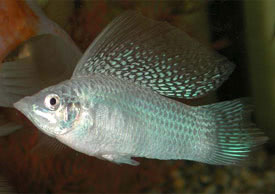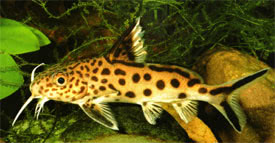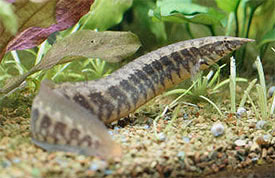
 Magyarul / Hungarian
Magyarul / Hungarian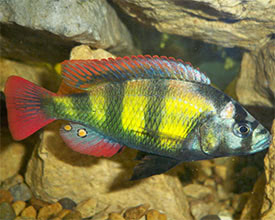

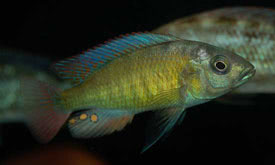
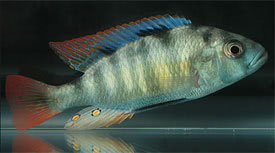
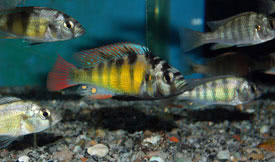
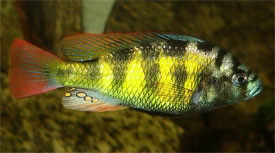

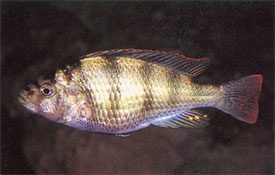

- Scientific name: Haplochromis sp. 44
- Synonyms:Astatotilapia sp. "Red Tail.", Haplochromis CH 44
- Common name:Haplochromis Thick Skin
- Group: Cichlids
- Habitat: Africa, Kenya; Lake Victoria
- Size: male: 8-10 cm, female 6-7cm.
- Biotope: Found on the east and north coastlines of Lake Victoria in the shallow, sandy bottomed waters.
- Social behavior: Despite the size they are aggressive and territorial cichlids, especially the males with each other, hence they should not be kept with other fish.
- Diet: Omnivorous; In nature they consume aquatic insects and larvae, while in aquarium they eat all kinds of live and frozen foods, but they also need some vegetable matter such as spirulina in their diet.
- Breeding: Quite easy
- Tank: Minimum 200 litres.
- Population: 1 male and 2-3 females for 280 litres
- Decoration: Use sand as substrate. and build a set-up with rock formations and provide many hiding places such as caves and tunnels.
- Temperature: 23-28 °C
- pH: 7.2-8.5
- Hardness: 5-20 NK°
- Lifespan: 10 years
Description: Haplochromis sp. 44 is a very colorful, hardy, and prolific cichlid from Lake Victoria. As the fish mature, its colors slowly becomes more intense. Males will color up at a very young age (approximately at 2,5 cm in length), but their color is continually changing and often depend on their mood. In the first couple of years the blue and black colors are being more intense, while later the red and oranges become more dominant. Females are more attractive than other Lake Victorian cichlid females, which are usually gray and dull. Haplochromis sp. 44 females have a faint golden base color with red trim on their unpaired fins. The vertical stripes become more visible when females are spawning or defending a territory. Males will show their best colors when more males are present in the aquarium, and they rival with each other trying to look more colorful. Spawning occurs more frequently when two or more males are present, even though these subdominant males may be prevented from spawning with the females by the dominant male. When kept in a group a hierarch will develop among them, where the dominant male and dominant female are more colorful and usually larger in size than the other fish. Haplochromis sp. 44 is considered by many experts to be extinct in the wild, due to the addition of Nile Perch into their natural habitat.
As most of other cichlids from Lake Victoria they also mouthbrooders, actually maternal mouthbrooders. Dominant males are very jealous of their females and will mercilessly persecute any rival males, so it is important to have many hiding places in their aquarium where the subdominant males and females can find cover. A good sign that spawning is near when males fight with each other – which they do very often. These fish become sexually mature at an early age, even a 3 cm long fish can spawn. The dominant male will color up brightly and start to dance around a female to get her attention, and when she accepts they will both dance around each other and will then start to mate. It is common for the females to abort the first couple of spawns before becoming excellent mothers. First spawns number between 10-15 eggs, and the female holding them in her mouth. These fish choose a flat stone, or a cave, or a gravel-cleared crater prepared in the substrate as the spawning site, which defended by the male. The female will drop one egg at a time, and pick it up with her mouth. Then the male lays on its side as the female nips his genitalia, causing the release of sperm which fertilize the egg. Do not feed them for a few days, as the female may spit out the eggs. The fry can be easily reared up with newly hatched brine shrimp or other live foods.





